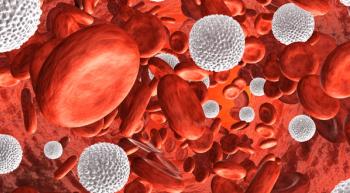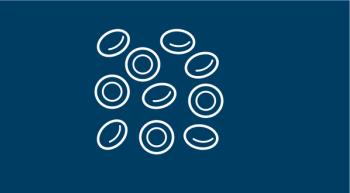
Adding Frontline Brentuximab Vedotin in Pediatric High-Risk Hodgkin Lymphoma Treatment Improves Outcomes
Adding the antibody-drug conjugate to the frontline treatment of patients with pediatric high-risk Hodgkin lymphoma resulted in favorable clinical outcomes.
The integration of the anti-CD30 antibody-drug conjugate (ADC) brentuximab vedotin (Adcetris) into the frontline treatment of pediatric patients with high-risk Hodgkin lymphoma resulted in favorable clinical outcomes with promising tolerability and a reduction in radiation exposure, according to data from a phase 2 HLHR130 trial (NCT01920932) published in the Journal of Clinical Oncology.1
The ADC replaced vincristine in the OEPA/COPDac regimen (vincristine, etoposide, prednisone, and doxorubicin/cyclophosphamide, vincristine, prednisone, and dacarbazine) per the GPOH-HD2002 treatment group 3; 2 cycles of AEPA and 4 cycles of CAPDac were given. Residual node radiation (RNRT) was given at the end of all chemotherapy to nodal sites that did not achieve complete response (CR) at the early response assessment (ERA) following 2 cycles of therapy.
Compared with 17% of patients in the historical control who experienced a CR at ERA, 35.1% (n = 27) of 77 patients enrolled to the study had achieved a CR following 2 cycles pf AEPA (95% CI, 24.5-46.8; P = .004) and were spared exposure to radiation. Of 50 patients who did receive radiation, 74% (n = 37) experienced a metabolic CR at all sites in the absence of an anatomic CR to at least 1 site; 36% (n = 13) did not achieve either anatomic or metabolic CR at all sites.
At a median follow-up of 3.4 years, the 3-year event-free survival (EFS) rate among patients, while the median overall survival (OS) was 97.4%, while the 3-year overall survival (OS) rate was 98.7%; these rates were 80.8% (P = .0008) and 96.5% (P = .311), respectively, in the historical control. No events were observed in the nonirradiated patients (n = 25/77).
“We have already reduced the use of radiation for [patients with] low-risk Hodgkin lymphoma,” Matthew Krasin, MD, co-senior author, and faculty member in the St. Jude Department of Radiation Oncology, stated in a press release.2 “In this study, we’ve shown that it is also possible to either omit or reduce the extent of radiation for high-risk patients, using highly focal methods such as proton beam radiation or intensity-modulated radiation.”
Over the past 2 decades, research efforts have focused on improving upon chemotherapy combinations, while reducing radiation for patients who are achieving inadequate responses to chemotherapy to minimize late toxicities. For the study, investigators sought to maintain favorable outcomes without intensifying chemotherapy and its related adverse effects (AEs) by substituting brentuximab vedotin for vincristine in OEPA/COPDac; based on response to the regimen, some then went on to receive RNRT.
To be eligible for enrollment, patients needed to be 18 years of age or younger with treatment-naïve Ann Arbor stage IIB, IIIB, or IV and classical CD30-positive Hodgkin lymphoma. Those who were CD30 negative or had received prior therapy for Hodgkin lymphoma were excluded.3
Patients received 2 cycles of AEPA, followed by 4 cycles of CAPDac. After the 2 cycles of AEPA, patients underwent an ERA with PET/CT, contrast-enhanced CT scan or MRI. In patients who did not achieve a CR, RNRT was delivered to the individual lymph nodes at ERA vs initial staging.
Lymph nodes that achieved a CR at ERA were not irradiated, while those who did not were targeted on radiation simulation studies following chemotherapy completion; this led to a further reduction in the targeted volume. Two to 4 weeks after chemotherapy was completed, radiation was given at 25.5 Gy in 17 fractions of 1.5 Gy.
The median age of study participants was 16 years (range, 6-19), and the majority were female (51%), White (65%) and presented with stage IVB disease (59%) and nodular sclerosing histology (77%). Patient demographics did not significantly differ between this study and the historical control in terms of age (P = .248), sex (P = .778), race (P = .397), or histology (P = .194). More patients with stage IIB were enrolled to the historical control group vs the HLHR13 group, at 43% vs 37% (P = .046).
An exploratory analysis was done to examine normal tissue exposure in patients who received residual nodal radiation with proton beam (n = 15; 31%) vs those treated with photon-based techniques. Patients who received proton beam received a significantly lower integral radiation dose vs photons (P = .002). Moreover, the reduction in tissue exposure by proton beam was also found for the volume of tissue receiving 5 Gy (P = .002), 10 Gy (P = .013), and 15 Gy (P = .04). Investigators found difference by modality when higher radiation doses were assessed.
The most common adverse effects (AEs) were hematologic events that mostly occurred during the first 2 cycles of therapy. Two patients (2.6%) received platelet transfusions, while 13 (17%) received packed red blood cell transfusions, and 19 (25%) received filgrastim during the first cycle (n = 8), second cycle (n = 7), or both cycles (n = 3). Additionally, 8 patients (20%) were hospitalized 12 times with febrile neutropenia.
“Being able to offer [patients with] Hodgkin lymphoma a targeted therapy in the frontline setting is an exciting development,” Melissa Hudson, MD, co-senior author, and director of the St. Jude Cancer Survivorship Division, added in the release. “We are constantly learning from research and applying new findings to the next iteration of clinical trials.”
References
- Metzger M, Link M, Billett A, et al. Excellent outcome for pediatric patients with high-risk Hodgkin Lymphoma treated with brentuximab vedotin and risk-adapted residual node radiation. J Clin Oncol. Published online April 7, 2021. doi:10.1200/JCO.20.03286
- Excellent outcomes reported for first targeted frontline therapy for high-risk pediatric Hodgkin lymphoma. News release. St. Jude Children's Research Hospital. April 8, 2021. Accessed April 8, 2021.
https://bit.ly/3s1PLfF - Adcetris (brentuximab vedotin), combination chemotherapy, and radiation therapy in treating younger patients with stage IIB, IIIB and IV Hodgkin Lymphoma. ClinicalTrials.gov. Updated December 7, 2020. Accessed April 8, 2021.
https://www.clinicaltrials.gov/ct2/show/NCT01920932
Newsletter
Knowledge is power. Don’t miss the most recent breakthroughs in cancer care.
















































































